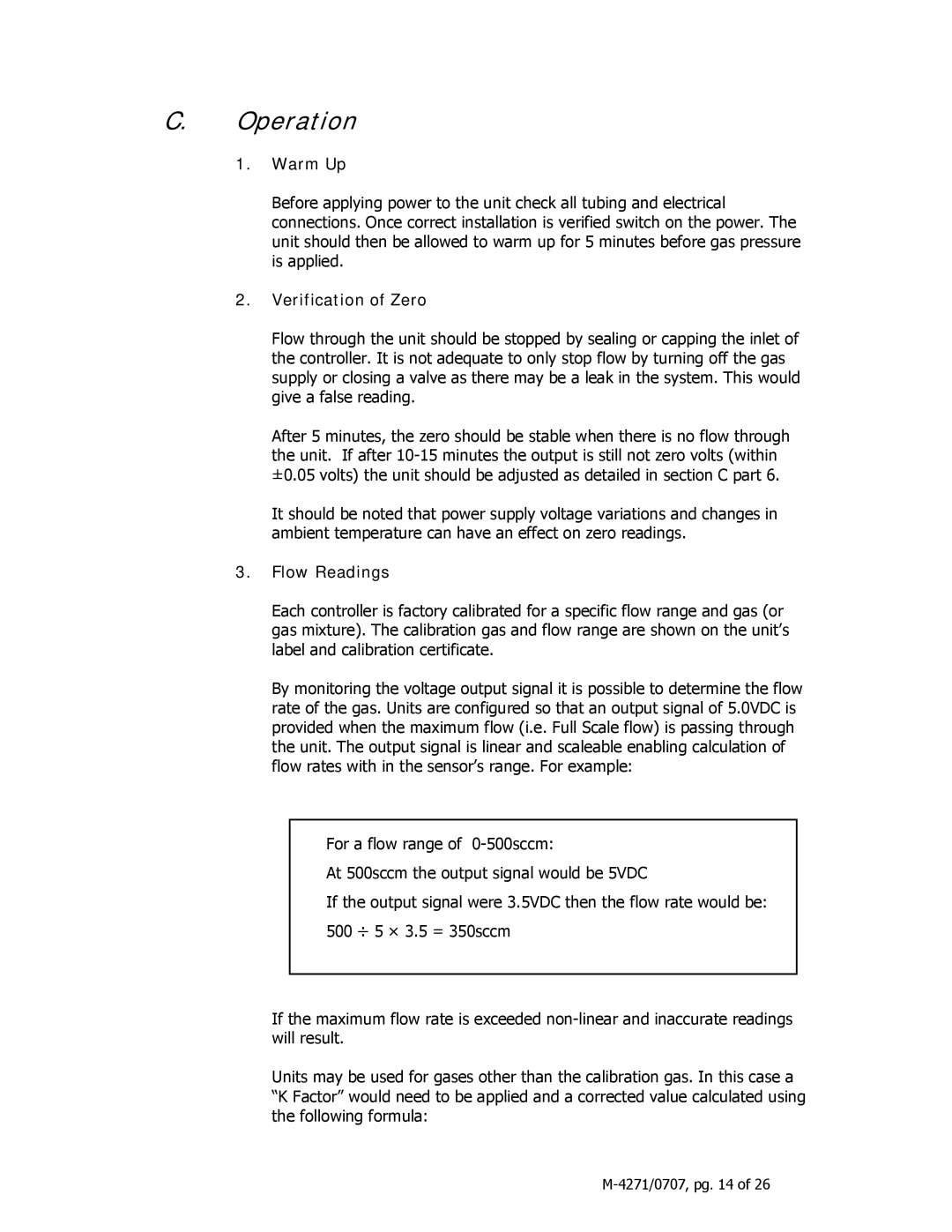
C.Operation
1.Warm Up
Before applying power to the unit check all tubing and electrical connections. Once correct installation is verified switch on the power. The unit should then be allowed to warm up for 5 minutes before gas pressure is applied.
2.Verification of Zero
Flow through the unit should be stopped by sealing or capping the inlet of the controller. It is not adequate to only stop flow by turning off the gas supply or closing a valve as there may be a leak in the system. This would give a false reading.
After 5 minutes, the zero should be stable when there is no flow through the unit. If after
It should be noted that power supply voltage variations and changes in ambient temperature can have an effect on zero readings.
3.Flow Readings
Each controller is factory calibrated for a specific flow range and gas (or gas mixture). The calibration gas and flow range are shown on the unit’s label and calibration certificate.
By monitoring the voltage output signal it is possible to determine the flow rate of the gas. Units are configured so that an output signal of 5.0VDC is provided when the maximum flow (i.e. Full Scale flow) is passing through the unit. The output signal is linear and scaleable enabling calculation of flow rates with in the sensor’s range. For example:
For a flow range of
At 500sccm the output signal would be 5VDC
If the output signal were 3.5VDC then the flow rate would be: 500 ÷ 5 × 3.5 = 350sccm
If the maximum flow rate is exceeded
Units may be used for gases other than the calibration gas. In this case a “K Factor” would need to be applied and a corrected value calculated using the following formula:
